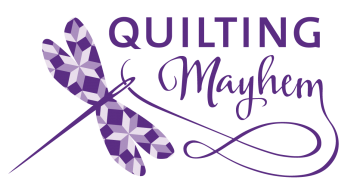What can a serger do?
There’s nothing like sitting down at your sewing machine and knowing that you have everything you need to make exactly what you want. But do you ever look at your sewing space and think to yourself, ”something is missing.” We know exactly what that is. You, my friend, need a serger. Whether you make garments or quilts, this versatile machine is a game-changer that will make your projects not only easier but more polished and professional.
What is a serger?
At its core, a serger, also known as an overlocker, is a specialized sewing machine designed to add finesse to your creations. Unlike your trusty sewing machine, a serger operates with multiple threads simultaneously, resulting in more durable finished seams and a variety of expanded uses. Here are the key features that differentiate a serger from a sewing machine.
- Speed and Efficiency: Sergers are fast, and we mean really fast. Sergers are designed for speed and efficiency. They can stitch quickly and handle long seams with ease.
- Multiple Threads: One of the key differences between a serger and a regular sewing machine is the number of threads used. While a typical sewing machine uses one or two threads, a serger operates with several threads simultaneously. The most common serger configurations are 3-thread and 4-thread sergers, each serving different purposes in creating strong and secure seams.
- Overlocking Stitch: The primary function of a serger is to produce an overlock stitch, also known as a serged or overlocked edge. This stitch not only secures the fabric’s edge but a built-in blade also trims off excess seam allowance, preventing fraying and providing a neat finish. The overlock stitch is essential for creating durable seams in various sewing projects, especially for knits.
- Differential Feed: Unlike a sewing machine, a serger has a feature called “differential feed.” This means that there are additional feed dogs allowing the layers of fabric that go under the needle to adjust and move evenly. It’s particularly useful when working with stretch fabrics, preventing puckering or stretching of the material and ensuring smooth and even seams.
- Versatility in Stitches: While sewing machines and embroidery machines offer hundreds of stitches, sergers have their own specialized set. Apart from the standard overlock stitch, sergers can create rolled hems, flatlock seams, and coverstitches.
Things a Serger Just Does Better
Polished Garments
For garment sewing, it’s all about the details. A serger’s ability to stitch and finish your seams at the same time ensures that your seams not only look professional but also are more durable and withstand the test of time. The neat and tidy edges produced by a serger prevent fraying, adding longevity to your Me Made clothing creations.
Knits
There’s plenty you can do with a domestic sewing machine to stitch on knits, but the differential feed in a serger ensures that your knit projects are easy and no fuss.
Handles Cuddle Fabric with Ease
This goes back to the above point; Cuddle is a knit fabric. Piecing a quilt with Cuddle fabric, known for its soft and plush texture, can be challenging. If you make a fun winter Cuddle quilt with a serger, however, it’s a breeze. The serger can handle Cuddle’s stretch to create quilts that make you go “ahhhh” instead of “AAARGH”.
Joining Batting Scraps
By far, one of our favorite secret techniques for quilting is to join batting pieces, a Franken-batting if you will. Butt scrap batting pieces against each other and run it through your serger with a flat lock seam, and you just made yourself a new batting for your project.
A serger is a must-have tool for every stitcher, whether you’re creating garments or quilts. Make the serger your secret weapon and see all that you can do with one at Quilting Mayhem.




